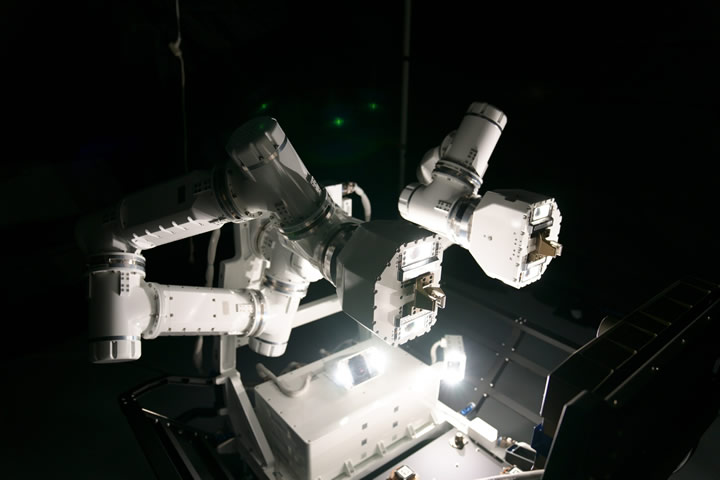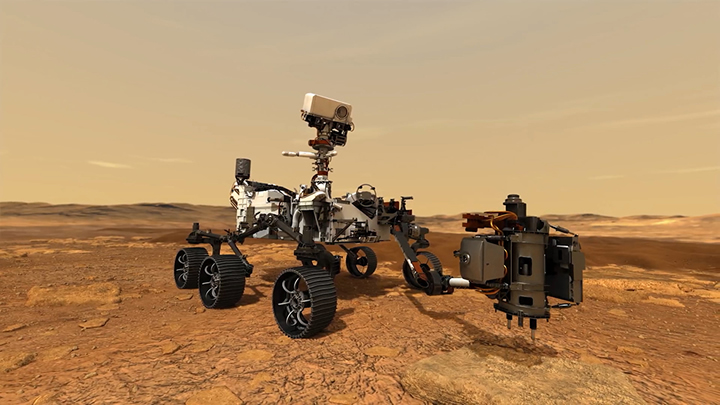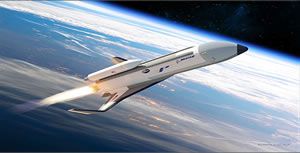GITAI Autonomous Robotic Arm Set to Launch on Jan. 29 to International Space Station
During the demonstration, the S2 will be mounted external to the International Space Station (ISS) on the Nanoracks Bishop Airlock and perform on-orbit services, including maintenance, inspection, and life-extension operations for satellites.
5 Challenges a Motor Has to Overcome on Mars Home
Outer space is unforgiving. This is why precision drives embarking on a trip to other planets need to meet extremely high quality standards.
Robotics Leads the Way For Space Exploration
Motiv Space Systems made several contributions to the Mars 2020 Mission. The Perseverance Robotic Arm was the highest visibility subsystem development. This role required a close relationship with the JPL systems engineering team responsible for the sample and caching efforts.
ATI Develops Space-rate Force /Torque Sensor for Mars 2020 Rover
JPL needed an automated system for collecting and handling space material as well as moving it through the indexing process. Engineers developed the Adaptive Caching Assembly, an application that resembles a pick and place operation commonly found on a factory floor.
Brain Corp Raises $36 Million to Meet Growing Demand for Autonomous Robots
Brain Corp, an AI company creating transformative core technology in the robotics industry, today announced it has raised $36 million in Series D funding to help meet the growing demand for autonomous mobile robots (AMRs) now on the front lines of the COVID-19 health crisis.
Will Creating Robots for Space Travel Become More Necessary in the Near Future?
The good news is that space-based exploration, travel and research are all ramping up not just at renowned organizations like NASA, but also at privatized operations such as Space-X and Made In Space.
Pioneering the Next Era of Space Operations and Exploration Through On-Orbit Servicing, Assembly and Manufacturing
The ability to robotically service, assemble, and manipulate assets in space promises to enable entirely new capabilities for commercial and government missions and will become essential to our exploration of the universe.
Meet the Free-flying Camera on the ISS
Meet the new colleague for the crew of the International Space Station (ISS): an autonomous camera drone. The small sphere films the astronauts at work and this drone could potentially save about ten percent of their valuable working time.
DARPA taps Boeing for unmanned reusable spaceplane
Ross Wilkers for Washington Technology: Boeing has emerged as the winner of a DARPAcompetition to design and test an unmanned reusable spaceplane.
Another Race to the Moon-This Time by Robots
On September 13, 1959, the Soviet Union landed the first human-made object on the surface of the Moon. The United States landed the first human on July 20, 1969. Now, there is a race to land the first robot on the moon.
Records 1 to 10 of 10
Featured Product

The piCOBOT Electric vacuum generator
Fully electric, slim design and absence of air-tubing and cabling. The new piCOBOT® Electric heads towards another success for Piab's piCOBOT® program. A secondary effect of these achievements is the absence of entangling air tubing and cabling. It simplifies the installation, and as the new piCOBOT® Electric only needs a single connection on the cobot arm, the clean set-up allows a completely unrestricted movement. The new piCOBOT® Electric package will contain plug & play software to fit UR e-series cobots, but many other useful adaptations will be introduced in the coming year










